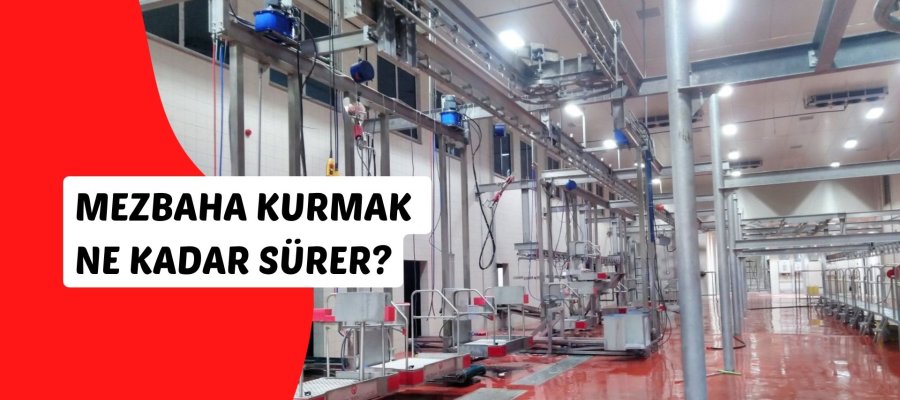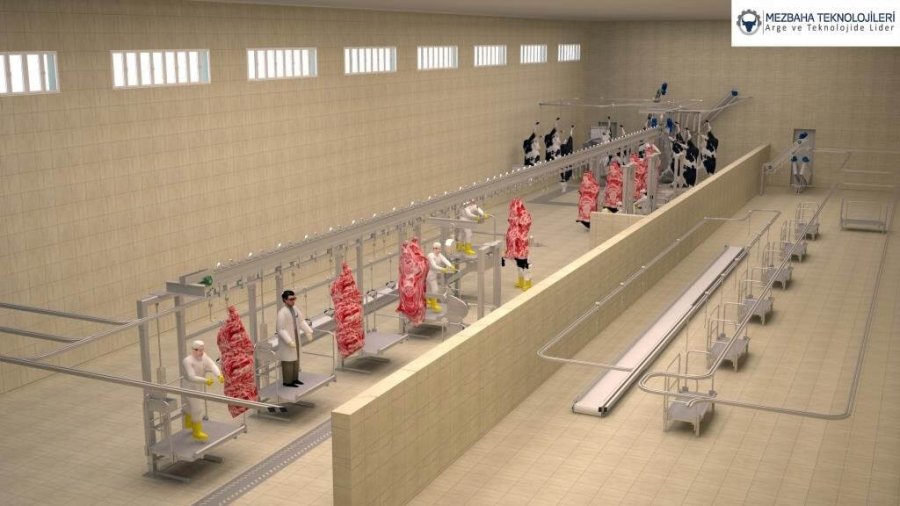
How Long Does It Take to Build a Slaughterhouse? Step-by-Step Process
Discover how long it takes to build a slaughterhouse! Explore our step-by-step process for a comprehensive understanding of the construction timeline.
11 September, 13:09
The construction of a slaughterhouse is a complex project that requires careful planning, compliance with regulations, and the use of modern technology. Many investors and entrepreneurs often ask: How long does it take to build a slaughterhouse?
The answer depends on several factors, including the scale of the facility, the level of automation, and local legal requirements. In this article, we will walk you through the step-by-step process of building a slaughterhouse and highlight the main factors that affect the overall construction timeline.
Initial Planning and Feasibility Study
The first stage of any project is conducting a feasibility study to evaluate demand, location, and investment costs. This essential phase typically takes 1 to 3 months and serves as the foundation for all subsequent planning activities. During this time, a comprehensive market research and capacity planning process is undertaken to understand the target audience and assess potential market size. In conjunction with market analysis, the selection of an appropriate location is critical to the project's success.
This involves evaluating various sites based on accessibility, demographics, and competition. Furthermore, a thorough cost and budget estimation is conducted to ensure that financial resources align with project goals.

Legal Permits and Regulatory Approvals
Slaughterhouses must comply with strict health, environmental, and safety regulations to ensure the well-being of both animals and consumers. One of the critical steps in this process is conducting an Environmental Impact Assessment (EIA), which evaluates the potential effects of the facility on the surrounding ecosystem. This thorough analysis is essential for obtaining necessary approvals and helps local authorities make informed decisions. In addition to the EIA, slaughterhouses must secure veterinary and food safety approvals to guarantee that all meat products meet health standards. These approvals typically involve inspections and certifications from relevant authorities, ensuring that the facility adheres to established safety protocols.
Furthermore, acquiring zoning and construction permits is crucial for the establishment of the slaughterhouse. The entire permitting process can take anywhere between 3 to 6 months, largely influenced by local regulations and the efficiency of the permitting authorities.
Architectural Design and Engineering
Architectural design and engineering play a crucial role in the development of modern facilities. Once permits are secured, detailed designs are prepared to ensure that all aspects of the project meet regulatory standards and operational needs. This meticulous planning includes the layout for animal holding areas, processing lines, cold storage, wastewater treatment, and worker facilities. The duration for completing these designs typically spans 2 to 4 months, during which engineering teams collaborate closely to address various challenges. Their primary focus revolves around optimizing hygiene flow, enhancing efficiency, and promoting sustainability within the facility.
See also: slaughterhouse equipment
Procurement of Equipment
Modern slaughterhouses rely on advanced equipment such as stunning systems, conveyors, carcass handling equipment, and cold rooms to ensure efficiency and safety in meat processing. The selection of these vital components is crucial for maintaining operational standards and adhering to regulatory requirements. The procurement process for this specialized equipment can be quite lengthy, often taking anywhere from 2 to 5 months. This timeline largely depends on the level of customization required for each piece of equipment, as well as the shipping times involved.
Effective procurement not only involves sourcing high-quality machinery but also negotiating with suppliers to align on specifications and delivery schedules. A thorough understanding of the market and technological advancements can help streamline this process.

Construction Phase
The construction phase is a critical period in the development of any project, as it marks the transition from planning to tangible progress. The actual construction period depends largely on the scale of the project. For small-scale facilities, this phase typically lasts around 6–8 months, while medium-scale facilities require approximately 10–14 months to complete.
In contrast, large-scale industrial slaughterhouses can take significantly longer, often spanning 14–24 months to finish. During this stage, essential activities are carried out, including foundation work, building structures, and the installation of utilities such as electricity, water, and drainage. Additionally, preparations for equipment installation are made to ensure a seamless transition to the operational phase.
Equipment Installation and Commissioning
Once construction is completed, the focus shifts to equipment installation and commissioning. This crucial phase typically takes about 2 to 4 months and involves careful planning and execution. The process encompasses mechanical and electrical installations, ensuring that all systems are correctly integrated and functioning as intended. In addition to installations, rigorous safety and hygiene inspections are conducted to guarantee compliance with industry standards. These inspections are vital for identifying any potential hazards and ensuring the overall safety of the production environment.

Staff Training and Operational Readiness
Even with modern automation, trained staff are essential for ensuring smooth operations in any facility. Comprehensive operational training on equipment is crucial, as it empowers employees to effectively utilize advanced tools and machinery, minimizing errors and maximizing productivity. In addition to technical skills, staff must be well-versed in hygiene and food safety protocols. This knowledge not only protects public health but also reinforces the integrity of the organization’s standards. Proper training in these areas helps prevent contamination and ensures compliance with health regulations.
Moreover, preparation for unforeseen circumstances is vital. Training in emergency and animal welfare procedures equips staff with the necessary skills to respond swiftly and effectively during critical situations, safeguarding both personnel and animals under their care. Together, these training components foster an environment of operational readiness and resilience.
See also: turkey slaughterhouse